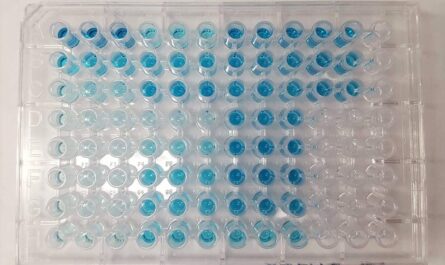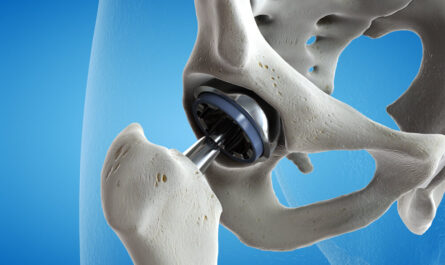Causes of Dysphagia
There are many underlying medical conditions that can lead to dysphagia or difficulty swallowing. Some of the most common causes include strokes, neurological disorders such as Parkinson’s disease or traumatic brain injuries, head and neck cancers, esophageal cancer, and progressive disorders such as amyotrophic lateral sclerosis (ALS). Dysphagia may also be present from birth in rare cases due to genetic conditions. The part of the swallowing process that is impaired can provide clues to the underlying medical cause. For example, problems in the oral preparation and transport stage may point to neurological issues, while esophageal dysphagia is more likely due to cancers or motility disorders of the esophagus. A careful dysphagia management by a physician is important to identify the root cause and appropriately direct treatment.
Swallowing Evaluation and Assessment
The gold standard for evaluating swallowing function is a videofluoroscopic swallow study (VFSS), also called a modified barium swallow study. In this test, the patient swallows small amounts of barium-coated food or liquid while under fluoroscopy, which allows visualization of the swallowing process using real-time X-ray imaging. Therapists and speech language pathologists carefully examine the ability to control food or liquid in the mouth, the coordination of swallowing, timing and sequencing of events, clearance of material from the airways before and after swallowing, and for any signs of aspiration or penetration deep into the respiratory tract during or after swallowing. Results can help determine the severity of Dysphagia Management and appropriate treatment. Other tools like fiberoptic endoscopic evaluation of swallowing (FEES) may also be used.
Diet and Lifestyle Modification
One of the first-line treatment approaches is modifying diet texture and consistency to minimize risks associated with swallowing difficulties. For patients with mild to moderate dysphagia, honey thick or nectar thick liquids may be recommended to slow the flow and allow better control. For those with more severe impairments, soft, moist, pureed or ground solid foods are preferred over hard, dry, crunchy, or flaky table foods that are difficult to safely manage or prepare for swallowing. Mealtimes also need extra time, smaller frequent meals or snacks are better tolerated than large volumes at once. Proper positioning, postural changes during eating, and strategies to minimize distractions can improve swallowing as well. Gentle exercises under guidance may also enhance coordination, range and strength of swallowing muscles over time.
Compensatory Techniques For Dysphagia Management
Patients are taught specific compensatory techniques and strategies to help overcome impaired swallowing function and minimize risks. Chin tuck or head rotation maneuvers may redirect food or fluids away from the airway. Multiple swallows for a single bite or sip can help clear material from the mouth and throat. Transfer techniques like using a gulping motion or swallowing with intervention shortly after food enters the mouth may improve control and safety. Supraglottic swallows involving muscle maneuvers in the throat can aid in protecting the airway. Pacing intake over time by taking controlled small sips interspersed with breathing intervals also allows coordination to catch up. Caregivers are educated on safe feeding techniques.
Non-Oral Feedings
For patients with severe Dysphagia Management who remain nutritionally compromised despite all dietary modifications, non-oral forms of feeding may be pursued. Nasogastric or nasojejunal feeding tubes can deliver liquid nutrition or thicker tube feed formulas directly into the stomach or small intestine, bypassing the mouth and esophagus. This reduces risks of choking, aspiration pneumonia or malnutrition. Percutaneous endoscopic gastrostomy (PEG) tubes provide longer term enteral access through a tube that is surgically placed through the abdominal wall into the stomach under endoscopic guidance. For those who cannot be safely fed orally or by tube, total parenteral nutrition delivered intravenously may be the only option.
Therapeutic Exercises
Exercises prescribed by a speech therapist use active range-of-motion and strengthening routines tailored to the specific impairments of individual patients. Thermal-tactile stimulation involving cold or hot foods and textures prepares the mouth and throat. Shaker, Mendelsohn, and effortful swallow maneuvers dynamically train muscles. Chin tuck exercises improve control. Repeated practice of safe swallowing strategies with various bolus sizes and consistencies reinforces learned skills. Neuromuscular electrical stimulation at acupuncture or massage points may facilitate muscles. Traditional Chinese swallowing exercises combining breathing and postures also show benefit. Over weeks to months of guided therapy, swallow function can relearn, regain coordination, and some level of improvement is often achieved.
Research to develop new treatment avenues for dysphagia management is ongoing. Supplements like botanical extracts that stimulate neuronal growth hold promise. Stem cell injections aim to repair damage. Robotics and sensor technology enabling biofeedback and exercise games make therapy more interactive and engaging. Transcranial direct current stimulation non-invasively modulates brain activity in key swallowing centers. Novel neuromuscular electrical stimulation devices target specific muscle structures. Preliminary results from these emerging modalities provide hope that more effective therapies will help manage dysphagia. Overall, combining lifestyle changes tailored care, exercises, and therapies results in the best outcomes for patients impaired swallowing ability. Dysphagia management requires a coordinated multidisciplinary approach.
*Note:
1. Source: Coherent Market Insights, Public sources, Desk research
2. We have leveraged AI tools to mine information and compile it




